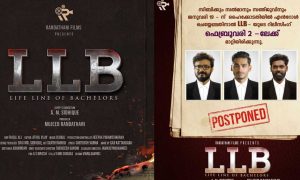Walled off in the city of Rome, Vatican City is a free city-express that is only one-eighth the extent of Central Park in New York City, and is the home of the Pope. In any case, the Vatican can likewise allude to the Holy See, which is the representing body of the Catholic church. These are the five darkest realities about the Vatican.
1.The Apostolic Penitentiary

Catholic priests have some pretty awesome powers when it comes to granting absolution for committing crimes. This includes forgiving people for things like murder, or mass murders and even genocide. That’s right: if you’re Catholic and you chop up the family next door and eat them, you could go to a priest, and ask for forgiveness and he could forgive you. Not only that, but the priest could never tell the police.
Yet, there are five sins that are so grave that priests can’t absolve them. Instead, inside the Vatican, they have a secret tribunal called Vatican-reveals-secrets-of-worst-sinsThe Apostolic Penitentiary which looks at cases involving these sins.
The tribunal was established by Pope Alexander III in 1179 and the type of cases that they examine has been a secret for much of its history. However, in 2009, the CatholiChurch made a huge step towards transparency and revealed the nature of these sins.
Two of them can be committed by anyone. The first is desecrating the Eucharist, because Catholics believe that it is the actual body and blood of Christ. The second is attempting to kill the Pope.
The other three sins can only be committed by a priest, or men trying to become priests. One is if a priest reveals a sin (and the person who committed the sin) that they hear in confession. Second, they can’t have sex with someone and then offer confession to their sexual partner.
2. The Vatican Bank and Nazi Gold

As indicated by a 1946 record from the Treasury Department, the Vatican may have both held and pirated Nazi gold amid World War II, in spite of being an impartial substance.
The report, which was conveyed to the consideration of people in general in 1997, said the Vatican bank held 200 million francs, which is about $254 million out of 2016, for the Nazis. As per talk refered to in the report, that cash was later channeled through something many refer to as the “Vatican pipeline” to Argentina and Spain, where it was given to Nazis who fled arraignment for atrocities.
The Vatican bank likewise clearly piped cash that was stolen from Serbs and Jews by the Utashe, who were a Nazi manikin administration in Croatia. Toward the finish of the war, the Utashe began looting from the casualties of their ethnic purging efforts and after that carried 350 million Swiss francs, which is worth about $440 million, out of Yugoslavia through the Vatican. The cash was then used to help the dangerous Ustashe association while they were in a state of banishment.
In 2000, a claim was brought against the Vatican over this issue, yet the suit at last fizzled.
3. The Banco Ambrosiano Scandal

The Vatican bank is formally known as the Institute for Religious Works, and from 1971 to 1989, the President of the bank was Archbishop Paul Marcinkus from Cicero, Illinois. Before that, the 6-foot-4 previous rugby player filled in as a bodyguard for Pope Paul VI. In any case, he’d be associated with an embarrassment that softened up 1982.
The outrage begun with the crumple of Banco Ambrosiano, which was one of the greatest private banks in Italy, with $1.4 billion in the red. In a matter of seconds thereafter, Roberto Calvi (presented above), who was the general director of the bank and companion of Marcinkus, was discovered dead, swinging from an extension in London, England. Initially it was viewed as a suicide, yet it was later led a murder. Five individuals were attempted in association with his murder, yet they were all cleared.
That conveys us to Marcinkus and the Vatican bank. Surprisingly the principle investor in the bank was the Vatican, and they had channeled a billion dollars from the bank into 10 shell organizations. Different bits of gossip that encompassed the outrage was that different investors with the bank were included in composed wrongdoing and some were even individuals from a mystery Masonic cabin.
At the point when Italian agents attempted to talk with Marcinkus about the embarrassment, he was extremely uncooperative. He declined to leave the Vatican, and even declined to answer questions, refering to strategic resistance. Marcinkus wound up being prosecuted, yet he never went to trial on the grounds that the charges against him were rejected. He kept on heading the Vatican bank for seven more years.
The outrage has even prompted some paranoid ideas. The most acclaimed one was utilized as a part of the plot of Godfather Part III, and it’s that Pope John Paul I was killed by the Mafia in August 1978. John Paul I was pope for just 33 days in 1978 preceding he was discovered dead sitting up in bed. The official reason for death was a heart assault, however no dissection was performed. As per the paranoid idea, he was killed on the grounds that he needed to put end the connection between the congregation and private bank.
4. Retiring Popes

For most Popes, it’s an occupation they have until the point when they bite the dust. It’s a piece of Catholic Dogma; it would resemble a parent surrendering his or her children. In any case, that doesn’t mean they aren’t permitted to. It’s quite recently exceptionally uncommon that they leave or resign. Actually, finished the previous 1,000 years there have been 123 Popes and out of every one of them, just five have surrendered.
The first to leave was Benedict IX, who was one of the most youthful Popes, and was likely around 20 when he initially donned that astounding cap. He was likewise the main individual to have served various terms as Pope. He was constrained out of the Papacy in 1036, however returned months after the fact and progressed toward becoming Pope once more. In any case, he had an issue – he needed to get hitched. So he wound up pitching the Papacy to the man who turned into his successor, Pope Gregory VI, in May 1045. Nonetheless, Benedict soon lamented doing that since it turned out the lady he needed to wed wasn’t occupied with wedding him. Uh oh. He could recover the title of Pope in November 1047, yet he just endured a year prior to he was expelled.
The second Pope to leave was the man who purchased the Papacy, Pope Gregory VI, who ventured down at the encouraging of the Bishops. He denied he did anything incorrectly, yet surrendered by the by in 1046.
The following Pope to leave was Pope Celestine V in 1294. He declared that if the Pope needed to leave, at that point he ought to be permitted to do as such. He did that very thing seven days after the fact, following five months of being Pope. In the wake of resigning, he lived like a loner for a long time. Tragically, his antecedent was concerned that Celestine may attempt to recover the Papacy or contradict him, so he had him detained, and he passed on following 10 months.
The following one was Pope Gregory XII in 1415. At the time, because of a faction in the Catholic Church, which begun in 1378, there were two Popes: one in Rome, and one in Avignon. Gregory ventured down with the goal that the Pope in Avignon could be suspended and the Catholic Church could get a new beginning.
The last Pope to leave was
Pope Benedict XVI in 2013; he did it refering to wellbeing reasons. Notwithstanding, there is a paranoid notion that he was constrained out, or undermined so much that he was compelled to leave. Advocates of this hypothesis call attention to that he resigned after the “Vatileaks” embarrassment, which was the spilling of records that demonstrated Pope Benedict’s battle to be more straightforward with general society about things like clerics and sexual mishandle, however inside legislative issues obstructed his designs. The Vatileaks outrage demonstrated that Benedict was an inadequate administrator and he resigned.
5. Exorcisms

With progresses in the fields of brain research, neuroscience, and science, it’s difficult to trust that expulsions are still performed by the Catholic Church. Be that as it may, as per previous exorcist Gabriele Amorth, who clearly performed 70,000 expulsions in his office in the Vatican, there are around 300 exorcists worldwide and four working in Rome.
Other than ministers performing expulsions, no less than two current Popes have performed expulsions in the Vatican.
The first was performed by Pope John Paul II in March 1982, on a young lady named Francesca Fabrizi from the Umbria locale of Italy. Amid the expulsion, she writhed on the ground and shouted out. The Pope said he would state mass for her the following day, which obviously cured her. She went ahead to carry on with an ordinary life, getting hitched and having children.
Pope John Paul’s second expulsion was in September 2000, when a lady with a background marked by ownership was sitting in the front line of the Pope’s week after week crowd. She flew into a fierceness and should have been controlled, however was excessively solid and battled off the security. When she was at long last limited, Pope John Paul chatted with her, embraced her, and after that played out an expulsion. Notwithstanding, it didn’t work and Father Amorth needed to do a subsequent expulsion session that kept going two hours the following day.
At that point in May 2009, Benedict XVI played out an expulsion on two men who were yelling amid the week after week gathering of people. Evidently, when Pope Benedict favored the men, they flew back nine feet and were cured.





















